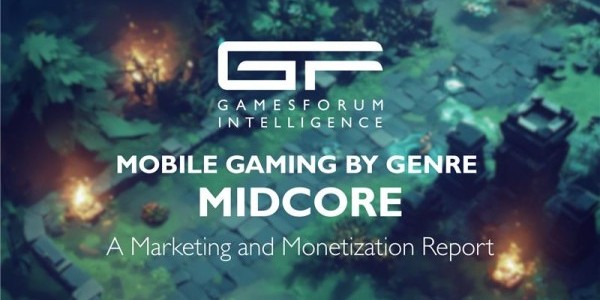How To Evaluate Mobile Game Ideas

How To Evaluate Mobile Game Ideas
By Max Samorukov, CEO, AppMagic
For developers passionate about an idea of a particular game
Here is a question game developers often find themselves concerned with: how do I evaluate the viability of a game idea that I’m about to start working on? Having invested many months and a ton of other resources in development, you’d quite like to end up with a game that is not just fun to play with your friends, but is an actual means of making money.
A quick statistical insight: each month, an average of 10,000 new games appear in the mobile stores* that would be ranked at least once, even in the least remarkable category; in at least one country; for at least one day. That is, all these apps get at least a speck of limelight as they make the radar—gaining a couple thousands of downloads, earning a few hundred dollars. About two thirds of them look like developers have put a lot of effort into production: they have coherent gameplay, art, UI, etc. The implication is that the devs worked hard, had appropriate skills and were passionate about one particular idea.
And yet, only around 3% of these will earn more than $100,000 over their lifetime. What about the others then? Those developers must have had certain aspirations and conviction, believing in their idea’s potential just like the more successful ones. Alas, it did not work out.
So, what can you do? How do you increase the chances of your future game’s commercial success? In fact, there are a few things to look at in order to figure out the commercial potential.
Has anyone else come up with a similar idea before? Looking for similar products.
It is not unusual for us to play some game and then become taken by the idea of creating your own version of it. For example, something similar to Archero or Brawl Stars. Ever happened to you? Before getting elbows deep into development, it is worth checking if anyone has already had a similar idea. And, if yes, what has come of their efforts?
There are several ways to find apps of similar nature:
- Search mobile stores by key words. For Google Play, this works quite nicely. For example, for the Archero mentioned earlier, the results are good. However, this method will not work for all the games: its efficiency depends on the way the particular store ranks its search results and on the competition for the used word.
- Search by subgenre. You’ll find this option provided by AppAnnie (but it is paid and very expensive), GameIntel (for free, you can see the top 5 apps by subgenre based on the top free app in the USA) and AppMagic (free, no limitations).
After researching and making an extensive list of the most relevant titles from your target subgenre, you can evaluate how special your idea is; which game design, monetization, art and UI solutions appear to be linked with success; and whether or not you are able to create a product which can be, with certain conviction, put in line with the most successful references found.
It is important to keep in mind that searching for reference apps only in the charts’ top ranks may result in survivorship bias. That is why it is important to pay attention to the less successful apps just as well. Digging deeper into the stores is how you discover millions of inglorious innovations resting (in peace or else).
This type of analysis won’t help you find guaranteed ideas for a successful game, but it can help avoid costly mistakes by leveraging other developers’ expertise.
Developing variations on successful games
This approach to development sometimes works out rather nicely, but it is still important to analyze others’ mistakes before embarking on your own development journey.
Let’s stick with the idea of building your own variation on Archero for now.

Have a look at Archero’s monthly revenue shown against 18 of its most remarkable clones. Yes, Archero’s own revenue is the blue area of the stacked graph, while the thin multi-color line is the aggregated income of all of its clones. Impressive, right? Each of the developers of these games most probably had a vision: they tried bringing something unique and exciting to the game in hopes of securing success; they put in a lot of effort. And yet none managed to even come close.
Moreover, the original Archero’s revenue has been falling from just about the very beginning. What does it tell us? Most of all, that developing a game in this genre is a dangerous challenge. The graph does not tell us why exactly none of the Archero clones succeeded, but it demonstrates the ideas and variations that have been exploited and couldn’t do the trick, thus warning you against someone else’s tried and tested mistakes and helping save plenty of your time, money and stress.
Visualizations of the type above are available to AppMagic’s premium users and are a handy way of comparing multiple apps’ revenues in one graph. However, you can still use AppMagic’s free tools to compare the positions of games in top grossing charts over time.
It is important to remember that only revenue from payments, subscriptions, and paid installations determine a game’s position in top grossing charts. Advertising revenue cannot be detected, and there is no analytical service that can provide you with decently accurate estimates of advertising revenues for mobile applications. However, some insight into advertising revenues can be gleaned from analyzing how app downloads are distributed across countries. This data is available for free from AppMagic.

Advertising revenue from a user from countries like India and Vietnam, if the monetization is configured properly, is $0.01-$0.05 cents (depending on retention, audience and game monetization); for Russia and Brazil, it is 3 to 5 times higher. Advertising revenue from the wealthiest countries can reach $1-2 per user.
In other words, if you see a game with a high number of downloads, be sure to identify the key countries where the bulk of its traffic comes from. If most of the contribution arrives from countries with low GDP per capita, such as India, Cambodia or Brazil, then one should not count on high ad revenue: from a million downloads in India, you may earn just $10-20K tops.
To sum up, when you are thinking about developing a variation on an existing game, here’s some advice: if you actually want to make some cash as opposed to just spend time developing the product, give more thought to innovative solutions in monetization, user retention and hypothesis testing rather than to beautiful art and twists in core gameplay.
Am I targeting a dying market segment?
If we look at how revenue shares of different mobile game genres have been changing in the largest Western countries, the first thing we notice is a sharp decrease in the red area that stands for RTS games.


In mobile games, there are no traditional RTS titles as we know them from PCs; in the mobile context, an RTS is usually a PvP game with real-time battles and elements of strategy where you’re required to control many units, such as Clash of Clans or Island War.
The question is, “Why have games of this genre been losing their market share so fast?” Are there maybe no newcomers in this genre? But there are! Are they of poor quality? Nope: there are lots of great games. So what is going on?
When something (a game or a genre—RTS is just an example here) is not growing or shrinking, the reason is always the same: developers cannot buy enough traffic to grow with a positive ROMI (return on marketing investment). In the case of a genre, it means that games of other genres with the same target audience can pay considerably more for an install, which results in them claiming traffic.
It is important to understand that, with the scaling of user acquisition and other things being equal, the cost of one install is increasing. Thus, a game (or genre) with a higher LTV (Lifetime Value) compared to its competitors will not claim all of the traffic, but the balance will shift: the one who is ready to pay more per install will get more traffic.The flip side is that even games with low LTVs can still purchase some users; however, the figure is often so low that it doesn't justify the costs of maintaining the game and the marketing team.
Seeing the rate at which the share of RTS games has been falling, it is clear that this genre is currently losing its battle for traffic on mobile platforms. And that means it is extremely dangerous to start developing a game of this genre.
One thing to add is that revolutions happen in many genres from time to time, unlocking great opportunities for whole new generations of games. That is why it is important to keep track of successful new products in different genres if you don't want to miss your window of opportunity.
How can you track successful new arrivals? For this purpose, some companies provide special tools for tracking recently released and fast-growing apps, including GameIntel (you can see 5 apps of the subgenre for free in the top free apps chart in the USA) and AppMagic (free, no limitations).

To hell with your marketing! True gamers will chance upon my game and love it and tell all their friends and the stores will help a good game with traffic—that’s how it's gonna work!
Erm, no. That’s not how the mobile market works. There is almost no free traffic in the stores. And what’s available will not provide you with the opportunity to earn money. Yes, there are a couple of exceptions: one being featured on a non-contractual basis and the other—using referral traffic from stores. But you cannot factor them in as your key ways to earn cash.
Yes, there are examples of games in stores that have become super viral and got stuck firmly in top charts while, at the same time, never buying traffic (or buying very little of it). However, these stories, for the most part, date back to old times when there were still many empty niches in the market—for example, corresponding to traditional games (card, sports, board). We can also recall unicums such as Minecraft and Roblox, but do bear in mind: these are those very striking rare exceptions from the general rule.
What do you do if you are not yet familiar with how user acquisition works? In this case, before starting your development, make sure that the market** is growing or is at least stable, and that its leaders change from time to time, making way for new titles. Once the app is produced, find a partner that understands how to turn an ambitious game into a blockbuster: a publisher with a record of notable recent success, or a traffic agency with good references from friends.
Notes:
* Refers to the largest mobile stores: Apple App Store and Google Play Store
** Refers to genre or subgenre
This is a guest article by Max Samorukov from AppMagic for Gamesforum










